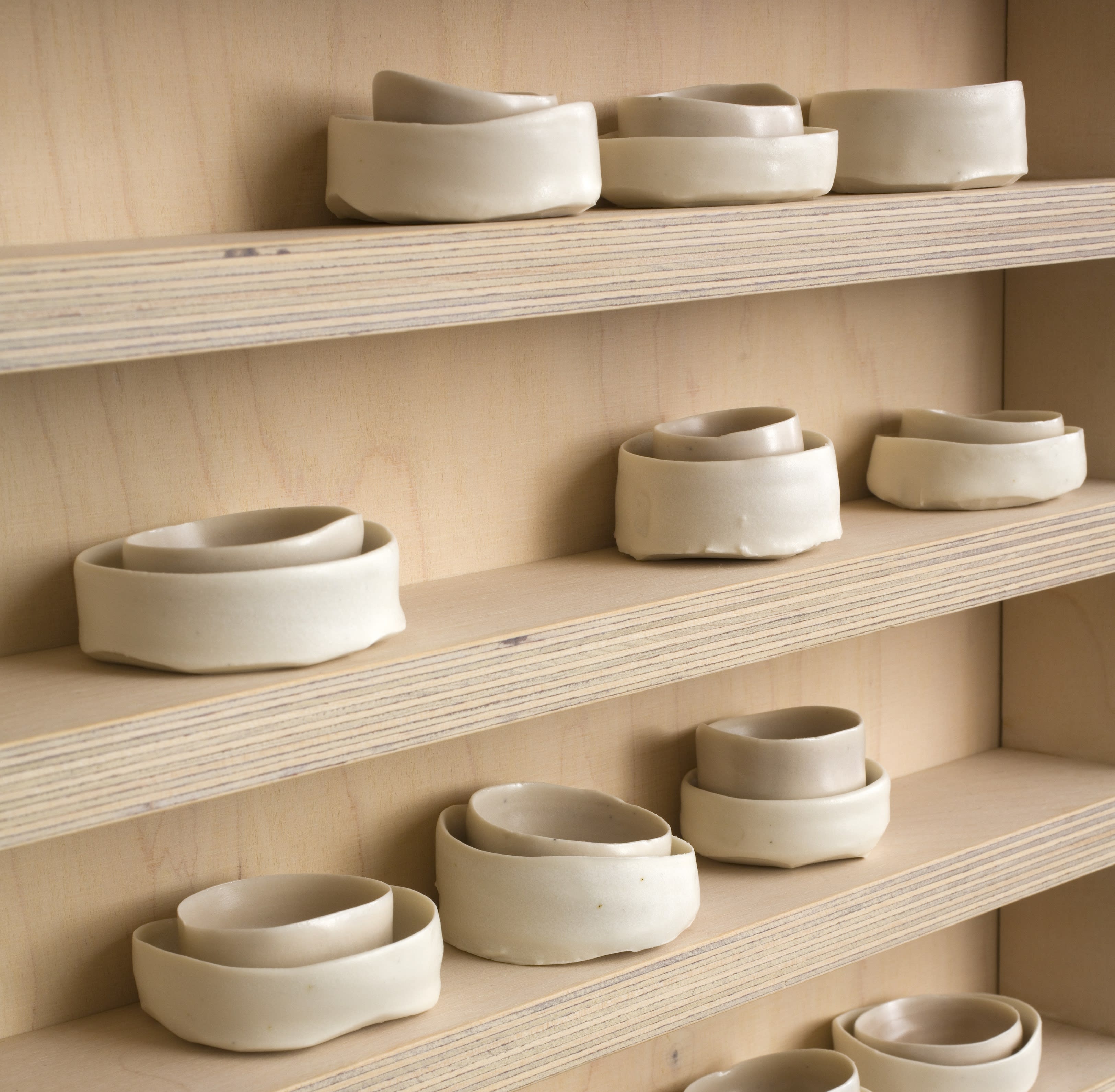The ceramic installations of Edmund de Waal defy categorisation, operating somewhere between the earthy rigours of studio pottery and the sophisticated semiotics of conceptual art.
InSight No. 137
Edmund de Waal | answer to an enquiry, 2011

The oldest known pottery comes from southern China. It was made 20,000 years ago. The way to make porcelain was discovered much later, in the early Middle Ages, and it was first produced industrially in the Chinese city of Jingdezhen in the fourteenth century. The invention and manufacture of porcelain is one of the great feats of human achievement, in part because it requires such high firing temperatures—1,300 degrees—in which kiln conditions are temperamental. Small discrepancies of thickness in a vessel, defects in the clay mixture, uneven temperatures in the kiln and mistakes when packing the kiln before firing can all result in failure. So called ‘kiln wasters’ suggest the difficulty of producing faultless porcelain. Even with long practice, the contingencies of the production process mean that unsuccessful firings are inevitable. As A.S. Byatt has written, ‘there is always an element of hazard in what happens in the fire.’

The craft of making porcelain is well understood by Edmund de Waal (b. 1964), whose practice responds to the histories of porcelain and studio pottery. Even as he uses arrangement and framing devices to tell a story with ceramics, his principal concern is with the singular pots and vessels from which his installations are composed. Each one is unique and made by hand on a potter’s wheel. De Waal’s work suggests his fascination with the material quality of porcelain and the alchemical mystique of transforming raw clay into something at once substantial and delicate, impermeable and translucent. The peculiar constitution of porcelain clay and a high firing temperature result in ceramic vessels of beguiling material contradictions: unlike other ceramics, porcelain’s translucency makes it brilliant as if emitting a glow from within.

De Waal’s art grows from a poetic imagination. He took a degree in English literature after a two-year apprenticeship with the potter Geoffrey Whiting and has more recently emerged as a talented author. He has written three books—The Hare with the Amber Eyes, The White Road and Letters to Camondo—and is apt to supply metaphors that evoke pottery’s poignance. In The White Road, he described shaping a pot on the wheel and how ‘the volume changes like an exhalation, something being said.’ Of porcelain, he wrote: ‘It is a material that records every movement of thinking, every change of thought.’ To read de Waal, it becomes possible to understand the deep and varied metaphors he projects and perceives in his own ceramic installations.

The psychic quality of porcelain vessels was explored in a short story by Colm Tóibín, written to accompany de Waal’s solo exhibition in 2012. The Arrangement is written in the voice of an unidentified first-person narrator, who is associated with a nameless being—identified only as ‘the other one’—who arranges porcelain pots aboard a ship during an eerie calm. Some similarity between the activities of ‘the other one’ and de Waal is evident: ‘I watched him arrange the pots, moving one sideways, another just a small amount to the left or right so that it stood alone. A great deal was at stake.’ The precise arrangement of de Waal’s ceramic installations is paramount and most are accompanied by an instruction document, which details the layout and relationship of each ceramic vessel.
answer to an enquiry illustrates the broad range of associations that de Waal invests in his work. It was made in connection with a temporary display at the Gardiner Museum, Toronto, and the title refers to a short text—‘Answer to an Enquiry’—by Canada-born post-painterly abstract artist Agnes Martin. Her ‘answer’ began, ‘My formats are square, but the grids never are absolutely square’, and much of her work used accumulated hand-drawn pencil markings to create gentle rectilinear structures. The marriage of handicraft and austere formality in Martin’s work bears comparison with de Waal’s own modernist idiom. But she is just one point in a much broader network of references in his practice, which encompasses Bernard Leach, Michael Cardew, Wallace Stevens, Kazimir Malevich, John Cage and many others besides. A lesser artist would be reduced to incoherence by such an eclectic mixture—not de Waal.
Images
1. Edmund de Waal, answer to an enquiry, 2011, plywood cabinet with 150 thrown porcelain vessels in pink, brown, grey and cream glazes, 89.3 x 66 x 10.5 cm
2. Kiln waster, seventeenth century, National Museum of Asian Art, Washington, D.C.
3. ‘Monk’s cap’ ewer, Ming dynasty, Private Collection
4. answer to an enquiry (detail)

